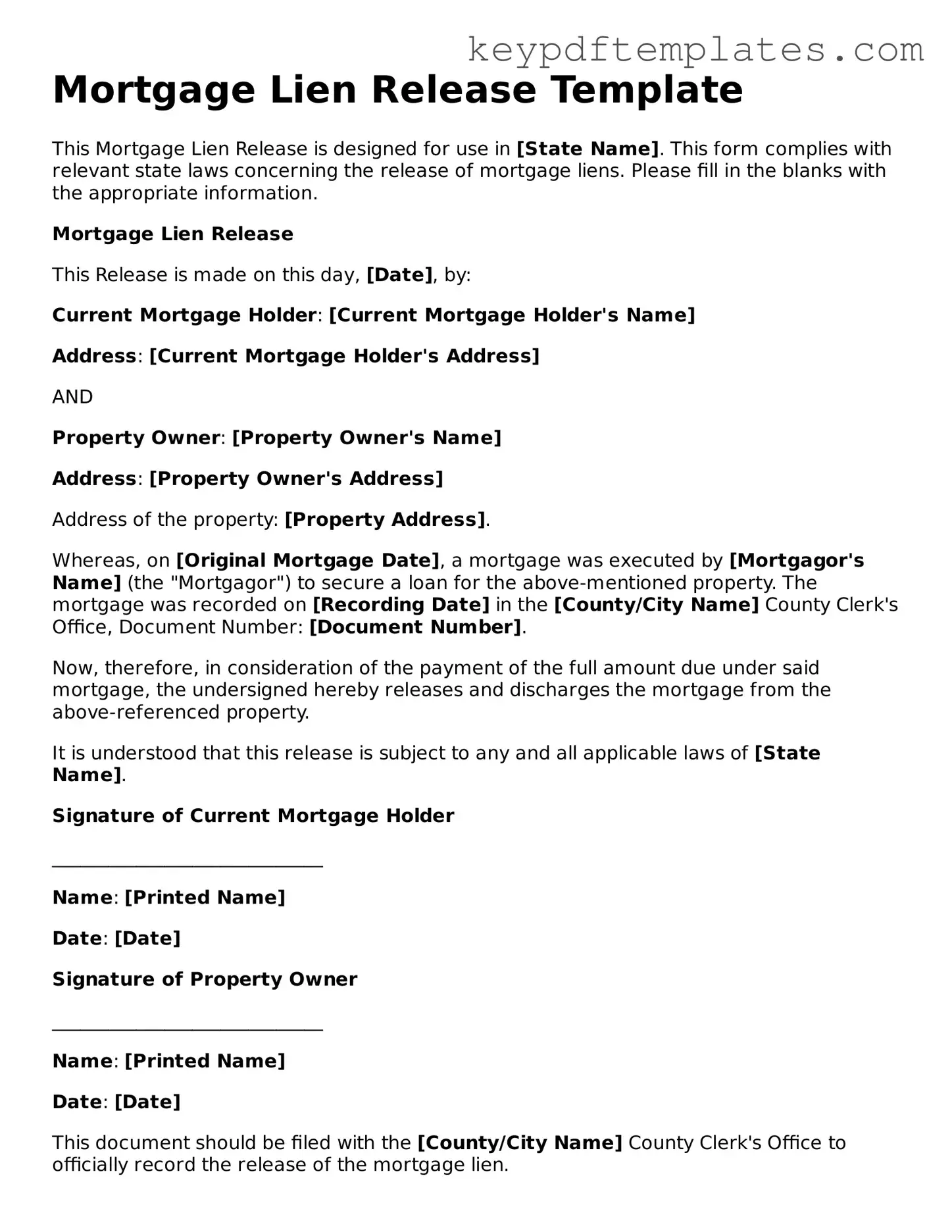Printable Mortgage Lien Release Template
The Mortgage Lien Release form is a legal document that formally removes a lien from a property once the mortgage debt has been paid in full. This essential form ensures that the property owner has clear title and can freely transfer or sell their property without any encumbrances. Understanding this process is crucial for homeowners and lenders alike, as it marks the completion of a significant financial obligation.
Modify Document Online
